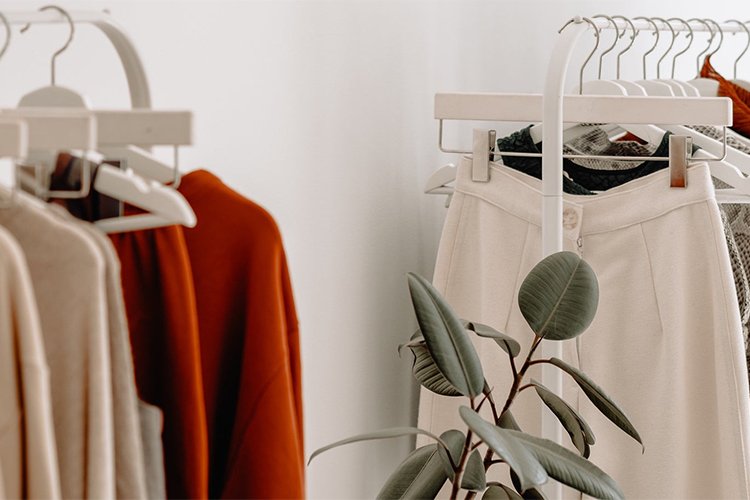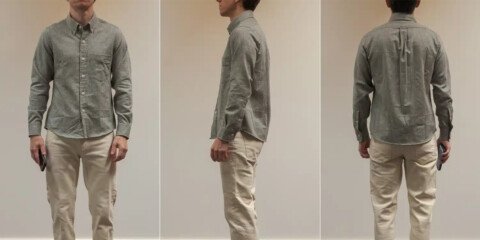In recent years, the fashion industry has seen a significant shift towards sustainability. With growing awareness of environmental issues, more and more people are becoming aware of the impact their clothing choices have on the planet. Sustainable fashion is about making conscious choices that prioritize eco-friendly practices, from choosing materials to supporting brands that are committed to ethical production.
If you want to build a wardrobe that reflects your commitment to sustainability, this blog will teach you how to do so in a way that is both stylish and responsible.
What is Sustainable Fashion?
Sustainable fashion refers to clothing, accessories and footwear that are produced and consumed in a way that has minimal impact on the environment. This includes everything from the materials used to the manufacturing processes and the longevity of the garments themselves. The aim is to reduce waste, lower the carbon footprint and support ethical working conditions for the people who make the clothes.
Unlike fast fashion, which focuses on cheap, mass-produced items, sustainable fashion encourages conscious consumption. Quality is prioritized over quantity, and the environment is impacted as little as possible at every step of the production process.

Why should you choose sustainable fashion?
There are several reasons to switch to a more eco-friendly wardrobe:
Reducing environmental impact: Fast fashion is one of the biggest contributors to pollution worldwide. From water wasted in textile production to harmful dyes that contaminate waterways, the fashion industry leaves a significant environmental footprint. By choosing sustainable fashion, you are helping to reduce that footprint.
Ethical practices: Many fast fashion brands often rely on cheap labor in developing countries, where workers are paid unfair wages and work in unsafe conditions. Sustainable fashion brands emphasize fair wages, safe working conditions, and transparency in their production practices.
Durability and quality: Sustainable fashion focuses on high-quality materials that last longer, reducing the need for constant replacements. This means less clothing ends up in landfills, which is a common problem with fast-fashion garments that wear out quickly.
Support innovative brands: By choosing sustainable brands, you’re supporting innovation in the fashion industry and encouraging other brands to rethink their practices and focus on sustainability.
Steps to building an eco-friendly wardrobe
Building a sustainable wardrobe doesn’t mean you have to sacrifice style or spend a fortune. Here are some simple steps to get you started:
1. Invest in timeless pieces
The foundation of a sustainable wardrobe is timeless, versatile clothing that you can wear for years. Instead of following trends that change with each season, focus on buying classic pieces that you’ll wear again and again. These include:
Neutral basics: Simple t-shirts, blouses, and sweaters in neutral colors like black, white, beige, or navy.
High-quality denim: A great pair of jeans that fit well can last for years.
Tailored blazers and trousers: These pieces never go out of style and can easily be dressed up or down.
Classic dresses: A little black dress or a well-fitting midi dress are always a great choice for different occasions.
By choosing items that never go out of style, you avoid having to constantly buy new clothes, save money, and minimize waste.

2. Opt for eco-friendly fabrics
When buying sustainable clothing, fabric choice is key. Conventional materials like cotton, polyester, and nylon can have harmful effects on the environment. Here are some eco-friendly alternatives:
Organic cotton: Organic cotton is grown without harmful pesticides or synthetic fertilizers and is better for the environment and your skin.
Linen: Linen is made from flax, is biodegradable, durable, and requires fewer resources than cotton.
Tencel/Lyocell: Tencel is a sustainable fabric made from wood pulp. It is biodegradable, uses less water and is produced using environmentally friendly processes.
Recycled fabrics: Some brands use recycled materials such as plastic bottles or old clothes to make new garmentsen. Recycled polyester, for example, is a great way to reuse plastic waste.
Whenever possible, choose garments made from these sustainable fabrics to reduce the environmental footprint of your wardrobe.
3. Buy less, choose better
One of the main tenets of sustainable fashion is to buy fewer, higher quality items. Avoid impulse purchases and focus on buying pieces that fit well, complement your personal style and are easy to mix and match.
Before you buy, ask yourself these questions:
Do I need this item or is it a trend that I will quickly forget?
Does this piece go with other items I already own?
Is it durable or will it fall apart after a few washes?
By shopping more consciously, you can avoid the pitfalls of fast fashion and make smarter, more sustainable choices.
4. Buy from sustainable brands
Supporting sustainable fashion brands is one of the most powerful ways to build an eco-friendly wardrobe. Many brands are committed to environmentally conscious practices, from using organic materials to ensuring ethical working conditions. Some popular sustainable brands to consider include:
Patagonia: Known for its commitment to environmental responsibility, Patagonia uses recycled materials in its clothing and focuses on fair labor practices.
Everlane: A transparent brand that offers ethical clothing made from sustainable materials.
Reformation: A trendy, sustainable brand that uses eco-friendly fabrics and focuses on reducing its carbon footprint.
Allbirds: A shoe brand that uses natural materials like merino wool and eucalyptus fibers.
When buying clothes, do your research to make sure the brands you support align with your values.

5. Secondhand Shopping
Buying secondhand clothes is one of the most sustainable ways to build a wardrobe. Not only does it reduce waste, but it also gives garments a second life. Thrift stores, online resale platforms like Poshmark, Depop, and ThredUp, and vintage shops are all great places to find high-quality, well-worn clothing at a fraction of the cost of new pieces.
Secondhand shopping is not only eco-friendly, but it also allows you to find unique items that may not be available in regular stores.
6. Take care of your clothes
Proper care and maintenance can extend the life of your clothes, keep them looking like new, and reduce the need for replacements. Follow these tips:
Wash cold: Cold washing saves energy and is gentler on the fabric.
Air dry: Skip the dryer and hang your clothes to dry when possible to avoid unnecessary wear and tear.
Repair instead of replacing: If a button falls off or a seam comes undone, try to repair it instead of throwing the garment away.
Taking good care of your clothes not only helps the environment, but it will also save you money in the long run.
Conclusion
Building a sustainable wardrobe is about making considered, conscious choices that prioritize the planet, ethical labor practices, and long-lasting quality. By investing in timeless pieces, choosing eco-friendly fabrics, shopping from sustainable brands, and paying attention to your clothing, you can build a wardrobe that reflects your values while still looking stylish.
Remember, sustainable fashion doesn’t mean sacrificing style. It’s about choosing items that are good for the environment and your wellbeing. By making small changes, we can all contribute to a more sustainable and responsible fashion industry. So take the plunge and start building your eco-friendly wardrobe today. Your clothes – and the planet – will thank you!







